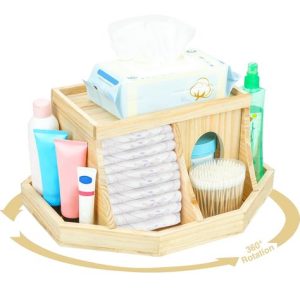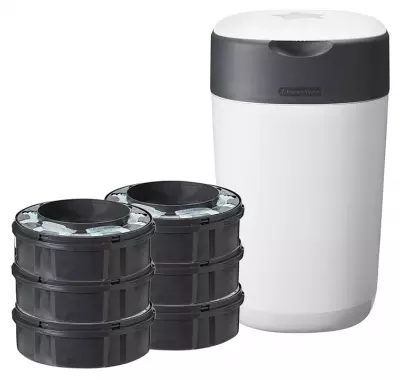How long do babies wear diapers? Diapers are a fact of life for parents of young children. But eventually, every child will transition to using the toilet. This article explores a typical timeline for diaper use and signs that your child might be ready to start potty training.
The Early Days: Newborns and Diapers
Newborn babies poop and pee frequently, so diapers are essential. Here’s a general idea of how many diapers a newborn might use:
Newborn Stage (0-3 Months):
Newborns can go through 8-10 diapers a day, sometimes even more! This is because their tiny bladders and bowels are still developing.
First Few Months:
As your baby grows, their diaper usage might decrease slightly. Still, expect to change diapers frequently throughout this stage.
Remember, every baby is different. Diaper usage can vary depending on feeding habits and individual development.

The Toddler Years: Exploring Potty Training Readiness
Most children are developmentally ready to begin potty training sometime between 18 months and 3 years old. Here’s why there’s a range:
-
Physical Development: Muscles needed for bladder and bowel control develop gradually. Some children reach this milestone earlier than others.
-
Cognitive Development: Understanding the urge to go and being able to communicate that need are important parts of potty training.
-
Interest and Readiness: Some children show a natural curiosity about the toilet and using underwear. Others may need more encouragement.
It’s important to wait for your child to show signs of readiness before starting potty training.
Signs Your Child Might Be Ready for Potty Training
Here are some signs that your child might be ready to start potty training:
-
Staying Dry for Longer Stretches: This shows their bladder control is improving.
-
Showing Discomfort in a Wet Diaper: This indicates they’re aware of the feeling of a full bladder.
-
Expressing Interest in the Toilet: They might ask questions about using the toilet or show curiosity about underwear.
-
Following Simple Instructions: Being able to follow basic directions is helpful for potty training.
These signs are a good starting point, but remember every child develops at their own pace.

The Transition from Diapers to Underwear
There’s no one-size-fits-all answer to the question of “how long do babies wear diapers?” Here’s the thing:
-
Every Child Develops at Their Own Pace: Some children transition quickly, while others take longer. There’s no set timeline.
-
Focus on Readiness, Not Age: The most important factor is whether your child shows signs of readiness, like staying dry for longer stretches or expressing interest in the toilet.
-
Positive Reinforcement: Create a supportive environment for potty training. Celebrate successes and offer encouragement.
Be patient and encouraging. Toilet training takes time, but with a positive approach, your child will eventually succeed.
Beyond Diapers: Nighttime Training
Nighttime training is a separate process from daytime training. Here’s why:
-
Bladder Control Development: Bladder control matures gradually. Most children achieve daytime dryness before nighttime dryness.
-
Hormone Production: The hormone that helps concentrate urine production is produced less during sleep. This can lead to more frequent urination at night.
-
Deep Sleep: Children in deep sleep may not wake up to use the potty.
Nighttime training can wait until your child is mostly dry throughout the day.
There’s no single answer to the question of “how long do babies wear diapers?” Every child develops at their own pace. The key is to wait for signs of readiness and create a positive and supportive environment for your child’s potty training journey.
Remember, patience, encouragement, and celebrating successes are key to a smooth transition from diapers to underwear.
While there’s no set timeline for how long babies wear diapers, most children are developmentally ready to begin potty training between 18 months and 3 years old. Here are some tips for navigating this stage:
-
Talk to Your Child’s Doctor: They can offer guidance on potty training readiness and answer any questions you might have.
-
Consider Your Child’s Individual Pace: Don’t pressure your child to start potty training before they’re ready. Signs like staying dry for longer stretches or showing interest in the toilet are good indicators.
-
Create a Positive Environment: Make potty training a fun and positive experience. Use colorful potty chairs, read potty training books, and offer praise for successes.
Remember, patience and encouragement are key!

Beyond Diapers: Nighttime Training
Nighttime training is a separate process from daytime training. Here’s why:
-
Bladder Control Development: Bladder control matures gradually. Most children achieve daytime dryness before nighttime dryness.
-
Hormone Production: The hormone that helps concentrate urine production is produced less during sleep. This can lead to more frequent urination at night.
-
Deep Sleep: Children in deep sleep may not wake up to use the potty.
Nighttime training can wait until your child is mostly dry throughout the day.
Factors Affecting Diaper Duration:
1. Developmental Milestones: Babies progress at different rates, and their readiness for toilet training varies accordingly. Factors such as muscle control, cognitive development, and communication skills play a significant role in determining when a child is ready to ditch the diapers.
2. Cultural and Social Norms: Cultural and societal expectations regarding toilet training vary widely. While some cultures start training early, others adopt a more relaxed approach, allowing children to transition at their own pace. Understanding these norms can help parents navigate the toilet training journey.
3. Parental Readiness: Parental readiness is another crucial factor in the diaper transition process. Some parents may feel pressure to initiate training early, while others prefer to wait until their child shows clear signs of readiness. It’s essential to consider both the child’s readiness and the parent’s comfort level when embarking on toilet training.

Title: How Long Do Babies Wear Diapers: A Comprehensive Guide
Introduction: The duration of diaper usage is a common concern for parents, with many wondering how long their little ones will need them. In this guide, we’ll delve into the factors influencing the length of time babies wear diapers and offer tips for a smooth transition.
Tips for a Smooth Transition:
1. Start Slowly: Ease into toilet training gradually, starting with simple concepts like sitting on the potty fully clothed or reading books about toileting. Encourage your child to explore the bathroom environment and become familiar with the toilet at their own pace.
2. Offer Rewards and Encouragement: Positive reinforcement can motivate your child during the toilet training process. Offer praise, stickers, or small rewards for successful toileting attempts, and celebrate their progress to boost their confidence and motivation.





